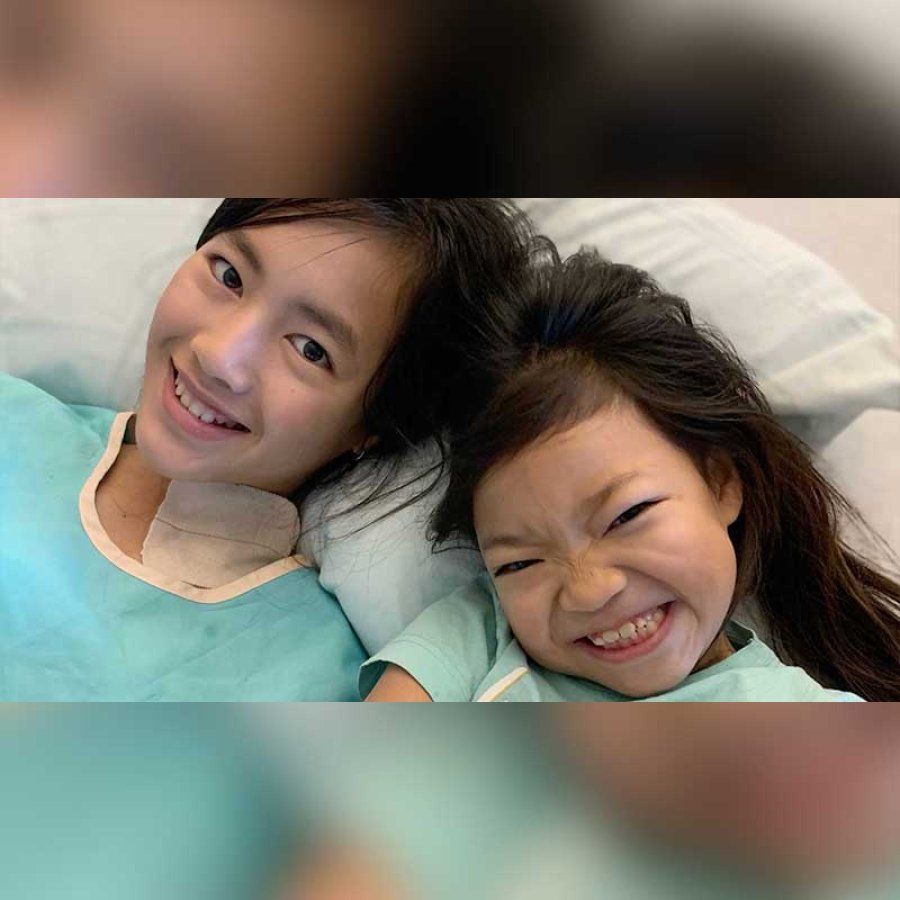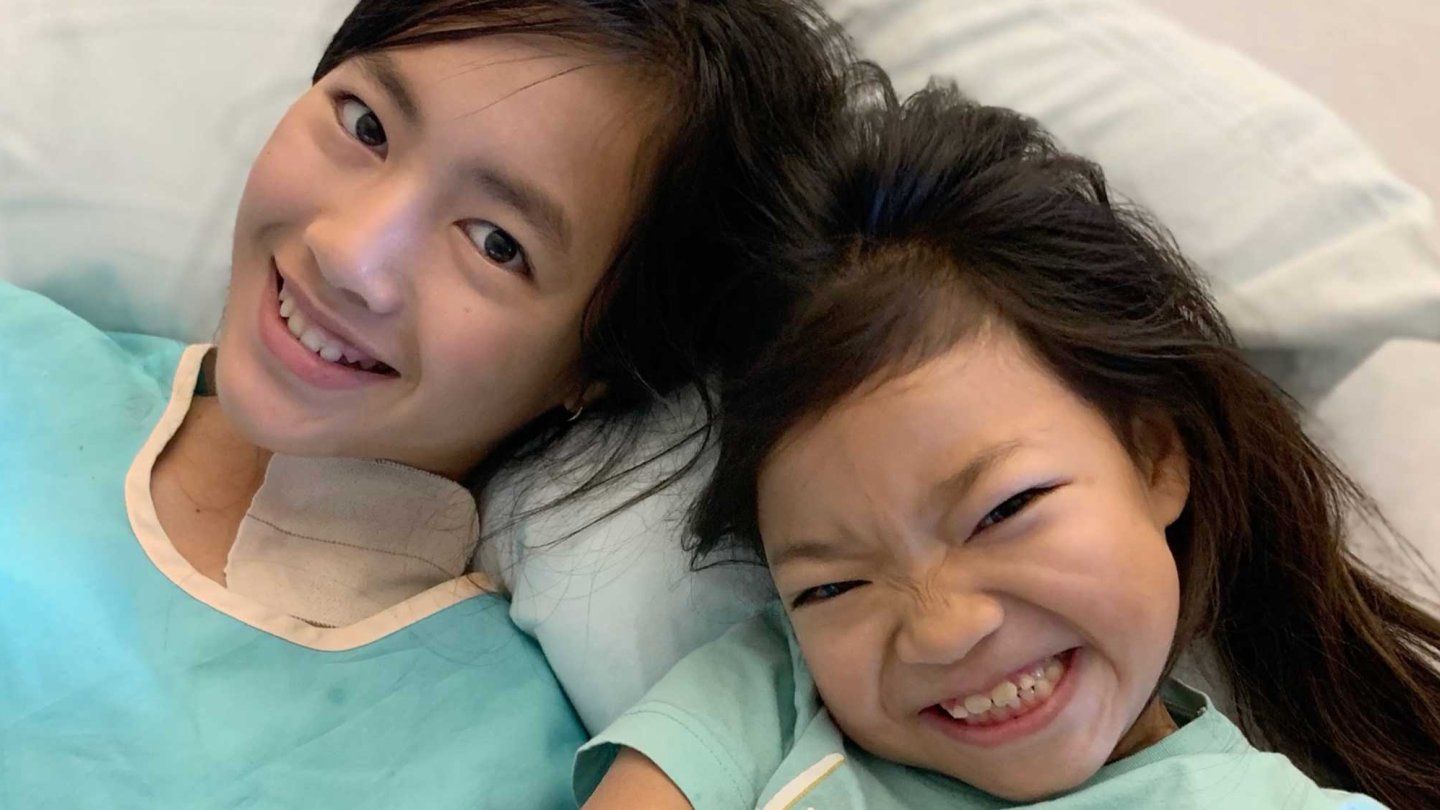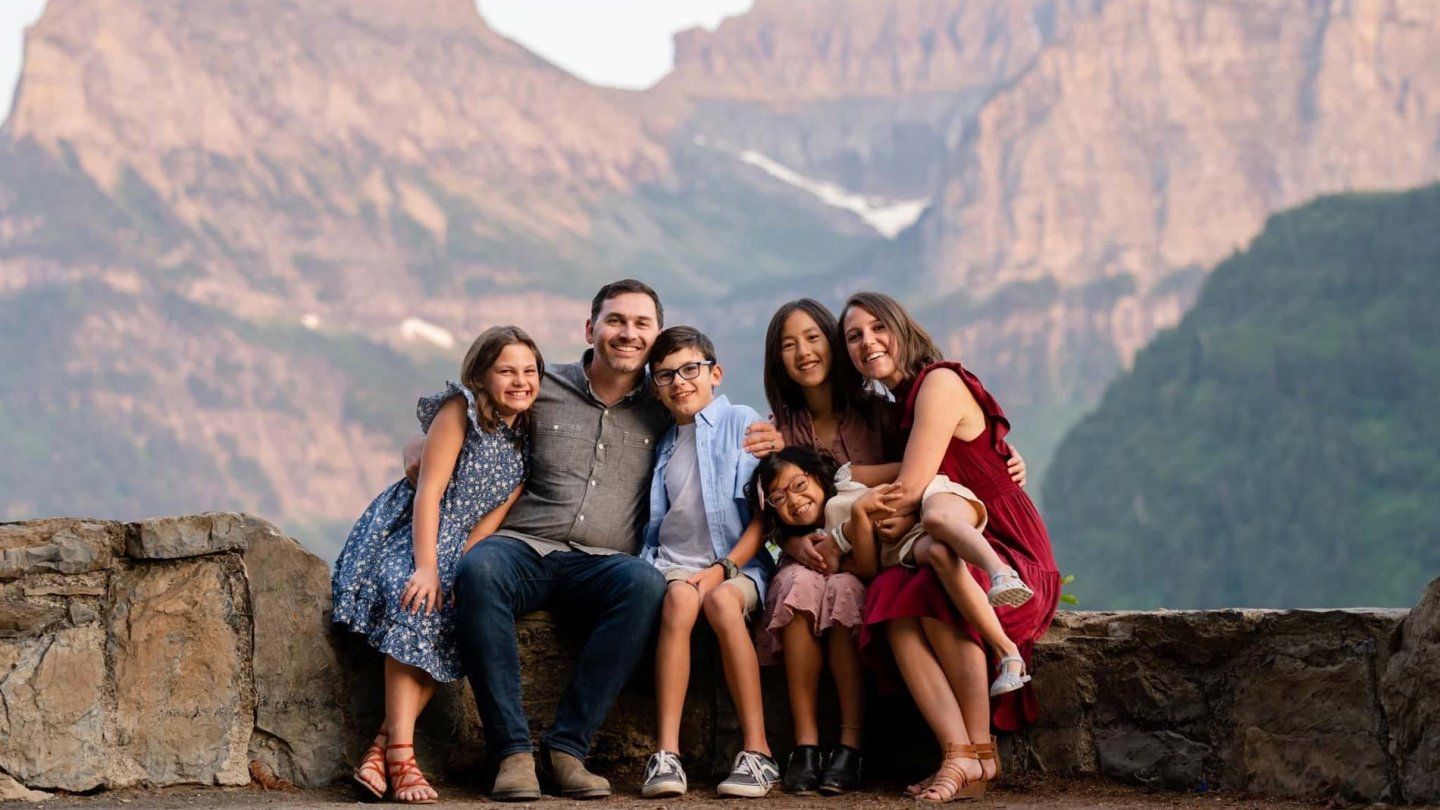With colorful headphones and eyes glued to her favorite Phineas and Ferb Disney movie on the family iPad, Ada reclined in her hospital bed tethered to a bag of medications and syringes of blood.
She was in the middle of a gene therapy transplant – an infusion of her own blood cells that had been genetically modified to correct her life-threatening blood disorder.
This novel therapy adds healthy, genetically modified blood to a patient’s own stem cells to correct the thalassemia. In clinical trials, 90% of patients successfully produced normal levels of hemoglobin — sufficient to discontinue ongoing medication, including monthly transfusions — after receiving the treatment.
“This new therapy could be a life-changer for beta thalassemia patients, who have required cumbersome and expensive, lifelong monthly blood transfusions,” said Mark Walters, MD, director of the pediatric Bone Marrow Transplant program at UCSF Benioff Oakland and chief of pediatric hematology at UCSF, who led the Oakland clinical trial of Zynteglo. “The reason gene therapy is so exciting is that each person is their own donor — we can use their own blood stem cells.”
Currently, the most effective cure for beta thalassemia is to receive a bone marrow transplant from a donor, like a sibling. Even then, the chances of finding a perfectly matched sibling are slim — less than 25%.
Ada’s parents, Alissa and Clint Finlayson, had front-row seats to witness the recovery of their daughters’ two friends who also had beta thalassemia. The girls’ friends – who participated in the 2017 clinical trials led by Walters at UCSF Benioff Oakland that resulted in FDA approval – have maintained healthy hemoglobin levels ever since.
“We got to watch a miracle unfold,” said Ada’s mother Alissa, with tears welling in her eyes, of the family’s friends in their small town of Kalispell, Montana. “We got to walk through their journey with them and watch them be healed.”
The Finlaysons had tried to enroll Ada and Lily in Walters’ clinical trial with their friends, but missed the cutoff. They were next on the list when the trial closed after reaching full capacity. Dejected, they thought the girls’ chance had passed.
Bumpy start
Four years later, disappointment turned to joy when a research assistant from UCSF Benioff Oakland’s Department of Hematology called to inform them that the trials were successful and the hospital had been certified to administer the newly FDA-approved Zynteglo therapy. As the first patients on the waiting list, the girls were candidates to receive the treatment. They would be the first patients on the West Coast to be treated for beta thalassemia using their own genetically engineered healthy blood cells.
Lily was inspired, eager and looking forward to a beta thalassemia-free life without transfusions. Ada, who admires her older sister, thought she’d follow in Lily’s footsteps. As with everything the two sisters did together, Lily usually took the lead and Ada followed. For their parents, this was an opportunity to provide their daughters as normal and carefree a childhood as possible, and a healthy life leading into adulthood.
Plans were finalized. First, they took a much-needed vacation to Scottsdale, Arizona to enjoy a week of sun and swimming during the Memorial Day weekend. From there, they planned to fly to Oakland to begin Lily’s blood transplant. Packed bags for the Oakland trip included Nintendo’s “Mario Kart Live,” so she could play in real time with her siblings back home. The atmosphere was electric.
However, a Zoom meeting with the girls’ Oakland hematology team after returning from Scottsdale, changed everything. Walters opened the meeting with news that the Lily’s cells had been compromised, and she could not move forward with the treatment without harvesting new stem cells.
“Time stopped,” Alissa said. “We were crushed.” This translated to a nine-month delay in Lily’s procedure, meaning Ada would be the first to undergo the treatment.
Ada was beyond devastated, her father said. “They were “thal-pals” and received transfusions and all medical treatments together. Lily can calm Ada down with her presence, and it hurts to know that Ada is now going through this without her.”
Lily’s reaction to the news, Clint said with his eyes glistening at the thought of his older daughter’s resilience, was, “So, when can they try again?”
How the Zynteglo Therapy Works
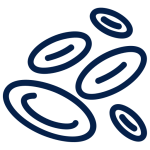
Harvest blood stem cells from patient
A catheter collects blood stem cells, which give rise to all blood in the body, from the patient's bloodstream.

Cells arrive at a manufacturing facility to be edited
The gene therapy introduces a healthy copy of the globin gene into a blood stem cell. Once edited, the stem cells are frozen.

Patient receives four days of chemotherapy
The chemotherapy kills any tainted hemoglobin in the bloodstream to make room for the new, healthy blood.
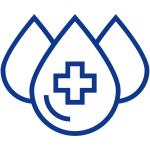
Frozen blood stem cells return to Oakland
The edited cells are thawed at the bedside and are given like a blood transfusion. The edited blood stem cells now produce plenty of hemoglobin to stop the need for regular blood transfusions.
Where something went wrong
The Zynteglo therapy starts by collecting the patient’s stem cells through a central catheter placed in a vein on the patient’s neck. Once collected, they are sent to a lab for "manufacturing,” which involves adding a healthy globin gene to overcome the thalassemia defect so that they create genetically engineered healthy beta-globin blood cells. This is where a problem developed with treating Lily’s blood.
After completing necessary tests, the patient receives four days of chemotherapy to kill old thalassemia-producing cells in the body and to make room for the new, healthy gene therapy stem cells. The patient then receives a "transplant,” similar to a transfusion of their genetically engineered stem cells, and is monitored closely to ensure the new stem cells are producing healthy red blood cells.
The process can take more than six months from start to finish, including the hospital stay and daily monitoring once the new blood stem cells are transplanted back into the patient.
One factor that helped soothe 9-year-old Ada’s fears was her familiarity with UCSF Benioff Oakland’s medical staff, whom she’d known since she was a toddler being monitored for her beta thalassemia. “Benioff Children’s Hospital Oakland is a beta thalassemia Center of Excellence,” Clint said, and his daughters’ medical provider, Michael Schwaller, MD, at Logan Health Medical Center in Kalispell, had been consulting and following guidance from Ashutosh Lal, MD, a hematologist and professor in the Department of Hematology and Oncology at UCSF Benioff Oakland, for eight years. Ada had been visiting Benioff Oakland annually since she was in diapers. She knew the medical staff and would be surrounded by familiar faces.
A matter of faith
As a young adult, Alissa Finlayson dreamed of adopting a daughter from China when she was ready to begin a family. She was stunned early in their relationship to find out that Clint was also drawn to the idea.
After seven years of marriage and two biological preschoolers, Clint and Alissa were 30 years old and met the requirements for the Chinese adoption program. Pouring through paperwork, they were stumped when faced with a question asking which medical condition or disability they would not accept in a child. Not recognizing most of the medical terminology, including “beta thalassemia,” they left the page blank — they would welcome a child into their family with any medical condition. They left it to fate — or specifically, their faith — to bring them their child. When Lily’s cherubic photo jumped out at Alissa from the agency’s photo album of children, she called Clint at work saying “I found her — our daughter.”
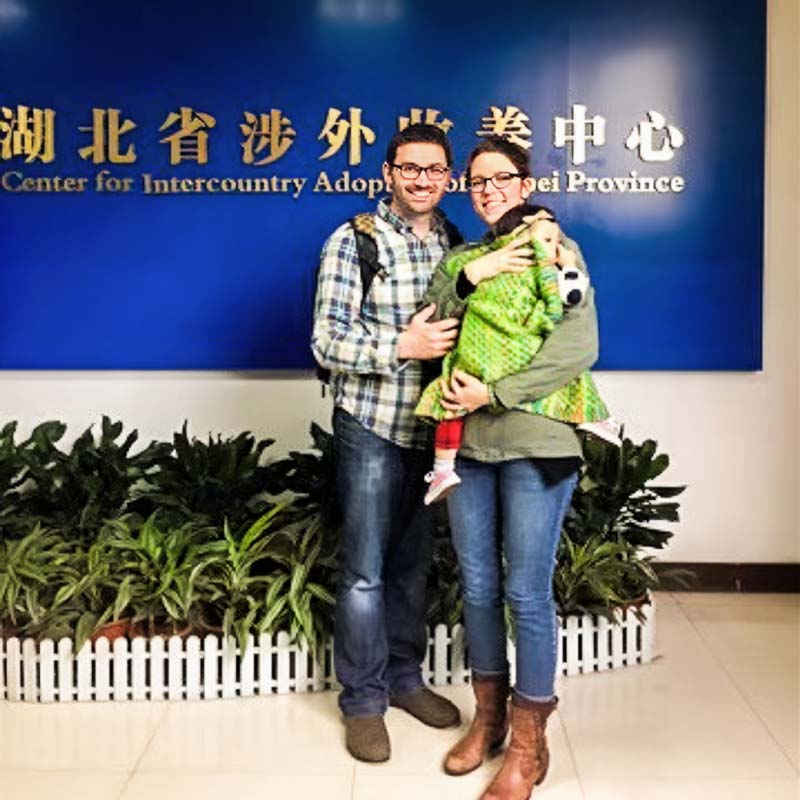

Three-year-old Lily’s beta thalassemia diagnosis was immediately disclosed and Clint and Alissa feverishly researched how best to manage the condition for their potential daughter. In five months, Lily’s new family welcomed her home. The quiet, reflective child swept the hearts of her new siblings and quickly folded into the family’s routine in their small town. About six months later, the Finlaysons received a call from the same adoption agency asking them to consider adopting a second 2-year-old girl with the same medical condition. The answer was a hard “Yes,” and Adelaide, affectionately called Ada, was welcomed into the family with open arms.
“She was the best surprise,” Alissa said. They weren’t planning to adopt another child so soon, but fell in love with Ada’s photo and she is now “a perfect fit for our family — how lucky we are that we got the call.”
Life without beta thalassemia
Ada doesn’t know a life without beta thalassemia, her father said. She was young at adoption and cannot comprehend a world without transfusions. But the monthly six-hour treatments don’t impede the family’s activities. These are folded into the family’s routine and whenever possible the medical appointments are scheduled around events that are important to the family, such as birthday parties, play dates and performances in the local children’s theater group.
Similar to the von Trapp family in the movie, The Sound of Music, the Finlayson family’s passion is performing in local musical productions. Liam, 12, played Pugsley in the Bigfork Summer Playhouse production of Adams Family: The Musical this year and Fletcher from Freaky Friday the year before. Liam, Lily and Ruby, 10, performed this year’s Children’s Playhouse production of Matilda, The Musical. Ada is not the performer of the family — but her creativity sparks behind the scenes.
Ada’s creative passion is reading, proved by the 100 books she has read since coming to Oakland for treatment on July 30, but also drawing comic strips and creating stop-motion videos with her siblings. The most recent project was a stop-motion Lego movie named The Mouse That Drove Mom Crazy. While Lily and Ada are polar opposites in personality — Lily’s calm to Ada’s effervescence, and Lily’s passion for musicals to Ada’s love of reading and creating stop-motion movies and comic strips — the two support each other physically, mentally and emotionally through their experiences with beta thalassemia that no one else can imagine.
Alissa admits that reversing the order of their daughters’ Zynteglo treatment initially felt devastating, but turns back to her faith when reflecting on the value of this sequence of events.
“It was hard for Ada to go first without Lily for support, but she has learned she possesses an inner strength I don’t think she realized was in her,” Alissa said. “Being the lead is a new experience for her, but now it’s her turn to guide Lily through the process.”
This novel therapy adds healthy, genetically modified blood to a patient’s own stem cells to correct the thalassemia. In clinical trials, 90% of patients successfully produced normal levels of hemoglobin — sufficient to discontinue ongoing medication, including monthly transfusions — after receiving the treatment.
“This new therapy could be a life-changer for beta thalassemia patients, who have required cumbersome and expensive, lifelong monthly blood transfusions,” said Mark Walters, MD, director of the pediatric Bone Marrow Transplant program at UCSF Benioff Oakland and chief of pediatric hematology at UCSF, who led the Oakland clinical trial of Zynteglo. “The reason gene therapy is so exciting is that each person is their own donor — we can use their own blood stem cells.”
Currently, the most effective cure for beta thalassemia is to receive a bone marrow transplant from a donor, like a sibling. Even then, the chances of finding a perfectly matched sibling are slim — less than 25%.
Ada’s parents, Alissa and Clint Finlayson, had front-row seats to witness the recovery of their daughters’ two friends who also had beta thalassemia. The girls’ friends – who participated in the 2017 clinical trials led by Walters at UCSF Benioff Oakland that resulted in FDA approval – have maintained healthy hemoglobin levels ever since.
“We got to watch a miracle unfold,” said Ada’s mother Alissa, with tears welling in her eyes, of the family’s friends in their small town of Kalispell, Montana. “We got to walk through their journey with them and watch them be healed.”
The Finlaysons had tried to enroll Ada and Lily in Walters’ clinical trial with their friends, but missed the cutoff. They were next on the list when the trial closed after reaching full capacity. Dejected, they thought the girls’ chance had passed.
Bumpy start
Four years later, disappointment turned to joy when a research assistant from UCSF Benioff Oakland’s Department of Hematology called to inform them that the trials were successful and the hospital had been certified to administer the newly FDA-approved Zynteglo therapy. As the first patients on the waiting list, the girls were candidates to receive the treatment. They would be the first patients on the West Coast to be treated for beta thalassemia using their own genetically engineered healthy blood cells.
Lily was inspired, eager and looking forward to a beta thalassemia-free life without transfusions. Ada, who admires her older sister, thought she’d follow in Lily’s footsteps. As with everything the two sisters did together, Lily usually took the lead and Ada followed. For their parents, this was an opportunity to provide their daughters as normal and carefree a childhood as possible, and a healthy life leading into adulthood.
Plans were finalized. First, they took a much-needed vacation to Scottsdale, Arizona to enjoy a week of sun and swimming during the Memorial Day weekend. From there, they planned to fly to Oakland to begin Lily’s blood transplant. Packed bags for the Oakland trip included Nintendo’s “Mario Kart Live,” so she could play in real time with her siblings back home. The atmosphere was electric.
However, a Zoom meeting with the girls’ Oakland hematology team after returning from Scottsdale, changed everything. Walters opened the meeting with news that the Lily’s cells had been compromised, and she could not move forward with the treatment without harvesting new stem cells.
“Time stopped,” Alissa said. “We were crushed.” This translated to a nine-month delay in Lily’s procedure, meaning Ada would be the first to undergo the treatment.
Ada was beyond devastated, her father said. “They were “thal-pals” and received transfusions and all medical treatments together. Lily can calm Ada down with her presence, and it hurts to know that Ada is now going through this without her.”
Lily’s reaction to the news, Clint said with his eyes glistening at the thought of his older daughter’s resilience, was, “So, when can they try again?”
How the Zynteglo therapy works
Harvest blood stem cells from patient
A catheter collects blood stem cells, which give rise to all blood in the body, from the patient’s bloodstream.
Cells arrive at a manufacturing facility to be edited
The gene therapy introduces a healthy copy of the globin gene into a blood stem cell. Once edited, the stem cells are frozen.
Patient receives four days of chemotherapy
The chemotherapy kills any tainted hemoglobin in the bloodstream to make room for the new, healthy blood.
Frozen blood stem cells return to Oakland
The edited cells are thawed at the bedside and are given like a blood transfusion. The edited blood stem cells now produce plenty of hemoglobin to stop the need for regular blood transfusions.
Where something went wrong
The Zynteglo therapy starts by collecting the patient’s stem cells through a central catheter placed in a vein on the patient’s neck. Once collected, they are sent to a lab for "manufacturing,” which involves adding a healthy globin gene to overcome the thalassemia defect so that they create genetically engineered healthy beta-globin blood cells. This is where a problem developed with treating Lily’s blood.
After completing necessary tests, the patient receives four days of chemotherapy to kill old thalassemia-producing cells in the body and to make room for the new, healthy gene therapy stem cells. The patient then receives a "transplant,” similar to a transfusion of their genetically engineered stem cells, and is monitored closely to ensure the new stem cells are producing healthy red blood cells.
The process can take more than six months from start to finish, including the hospital stay and daily monitoring once the new blood stem cells are transplanted back into the patient.
One factor that helped soothe 9-year-old Ada’s fears was her familiarity with UCSF Benioff Oakland’s medical staff, whom she’d known since she was a toddler being monitored for her beta thalassemia. “Benioff Children’s Hospital Oakland is a beta thalassemia Center of Excellence,” Clint said, and his daughters’ medical provider, Michael Schwaller, MD, at Logan Health Medical Center in Kalispell, had been consulting and following guidance from Ashutosh Lal, MD, a hematologist and professor in the Department of Hematology and Oncology at UCSF Benioff Oakland, for eight years. Ada had been visiting Benioff Oakland annually since she was in diapers. She knew the medical staff and would be surrounded by familiar faces.
A matter of faith
As a young adult, Alissa Finlayson dreamed of adopting a daughter from China when she was ready to begin a family. She was stunned early in their relationship to find out that Clint was also drawn to the idea.
After seven years of marriage and two biological preschoolers, Clint and Alissa were 30 years old and met the requirements for the Chinese adoption program. Pouring through paperwork, they were stumped when faced with a question asking which medical condition or disability they would not accept in a child. Not recognizing most of the medical terminology, including “beta thalassemia,” they left the page blank — they would welcome a child into their family with any medical condition. They left it to fate — or specifically, their faith — to bring them their child. When Lily’s cherubic photo jumped out at Alissa from the agency’s photo album of children, she called Clint at work saying “I found her — our daughter.”


Three-year-old Lily’s beta thalassemia diagnosis was immediately disclosed and Clint and Alissa feverishly researched how best to manage the condition for their potential daughter. In five months, Lily’s new family welcomed her home. The quiet, reflective child swept the hearts of her new siblings and quickly folded into the family’s routine in their small town. About six months later, the Finlaysons received a call from the same adoption agency asking them to consider adopting a second 2-year-old girl with the same medical condition. The answer was a hard “Yes,” and Adelaide, affectionately called Ada, was welcomed into the family with open arms.
“She was the best surprise,” Alissa said. They weren’t planning to adopt another child so soon, but fell in love with Ada’s photo and she is now “a perfect fit for our family — how lucky we are that we got the call.”
Life without beta thalassemia
Ada doesn’t know a life without beta thalassemia, her father said. She was young at adoption and cannot comprehend a world without transfusions. But the monthly six-hour treatments don’t impede the family’s activities. These are folded into the family’s routine and whenever possible the medical appointments are scheduled around events that are important to the family, such as birthday parties, play dates and performances in the local children’s theater group.
Similar to the von Trapp family in the movie, The Sound of Music, the Finlayson family’s passion is performing in local musical productions. Liam, 12, played Pugsley in the Bigfork Summer Playhouse production of Adams Family: The Musical this year and Fletcher from Freaky Friday the year before. Liam, Lily and Ruby, 10, performed this year’s Children’s Playhouse production of Matilda, The Musical. Ada is not the performer of the family — but her creativity sparks behind the scenes.
Ada’s creative passion is reading, proved by the 100 books she has read since coming to Oakland for treatment on July 30, but also drawing comic strips and creating stop-motion videos with her siblings. The most recent project was a stop-motion Lego movie named The Mouse That Drove Mom Crazy. While Lily and Ada are polar opposites in personality — Lily’s calm to Ada’s effervescence, and Lily’s passion for musicals to Ada’s love of reading and creating stop-motion movies and comic strips — the two support each other physically, mentally and emotionally through their experiences with beta thalassemia that no one else can imagine.
Alissa admits that reversing the order of their daughters’ Zynteglo treatment initially felt devastating, but turns back to her faith when reflecting on the value of this sequence of events.
“It was hard for Ada to go first without Lily for support, but she has learned she possesses an inner strength I don’t think she realized was in her,” Alissa said. “Being the lead is a new experience for her, but now it’s her turn to guide Lily through the process.”

